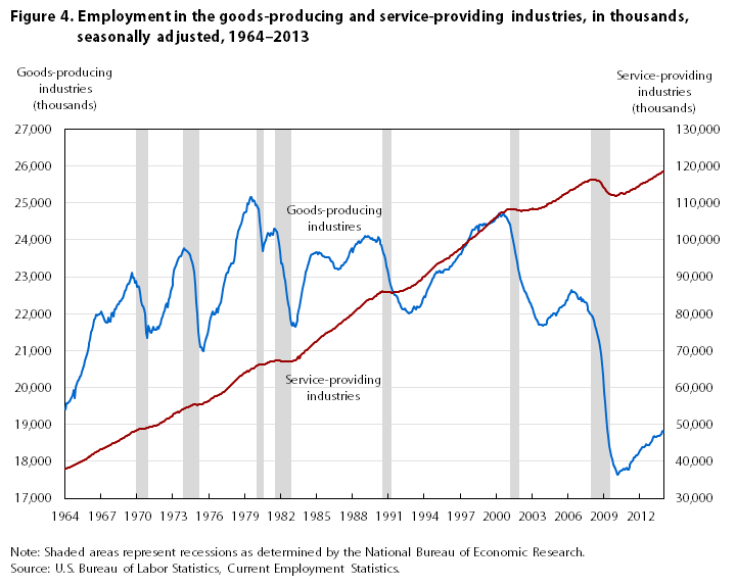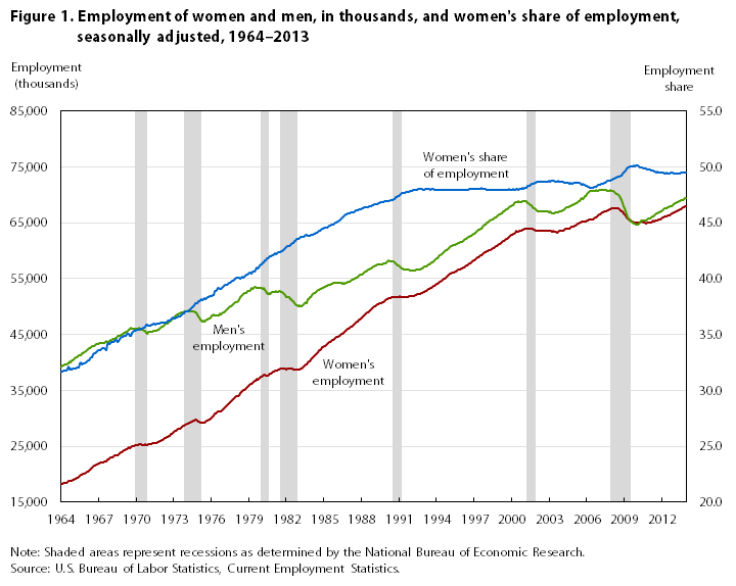Why Women Lose Fewer Jobs Than Men During US Recessions Explained In Three Simple Charts

Women in the U.S. have made great strides in economic independence in the past 50 years, but the most recent progress may have more to do with the lower quality of available jobs than gender empowerment.
A new report by the U.S. Bureau of Labor Statistics takes a look at the history of women’s participation in the workforce and concludes the long-term shift in the nature of the American workforce has benefited women in terms of participation, but at a price.

Men have traditionally held the better-paying manufacturing jobs, but globalization and free trade have sent many goods-producing jobs overseas. The products are then shipped back to the U.S. consumer who gravitates toward lower-cost goods made by emerging market workforces. This fuels a trade deficit and has made many U.S. manufacturing segments far more vulnerable to economic downturns.
“By contrast, the service-providing industries, which represent the majority of payroll employment and whose share of total nonfarm employment has risen from 68 percent in 1969 to 86 percent in 2013, have historically accounted for a much smaller percentage of recessionary job losses and, in some cases, contributed to net job gains during recessions,” Catherine Wood, a U.S. Bureau of Labor Statistics economist, wrote.
And guess who's more likely to hold a job as a Wal-Mart cashier, a nursing home attendant or a restaurant server? A woman.

In 2013, 78 percent of all jobs in the goods-producing industries were held by men, whereas 54 percent of all jobs in the service-providing industries were held by women. The chart below shows why women have seen their share of U.S. jobs grow: because the U.S. economy wants more Americans providing services rather than making things.

© Copyright IBTimes 2024. All rights reserved.












